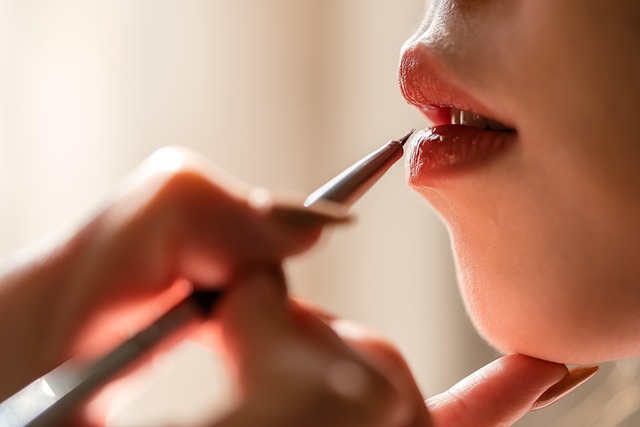Tinted lip balms combine essential moisturizers like beeswax, shea butter, glycerin, and oils with pigments and dyes to offer both color and hydration. They may include vitamins E and C, SPF components for protection against UV rays. While natural pigments are preferable, synthetic alternatives like carmine and azo dyes are commonly used. Increasing consumer demand for transparency and safer options is driving the industry towards innovative, natural color solutions. Always consider ingredient lists to avoid sensitivities or allergies.
“Unveiling the Secrets of Tinted Lip Balm: Composition, Safety, and Regulations. In the realm of beauty products, tinted lip balms have become a staple for enhancing lips’ natural allure. This article delves into the intricate composition of these popular items, exploring common ingredients from emollients to colorants. We weigh safety considerations, analyzing potential risks associated with chemicals in cosmetics, especially lip balm. Furthermore, understanding cosmetic regulations and their impact on ingredient disclosure empowers consumers. By examining labels wisely, users can make informed choices, ensuring a safe and effective beauty routine with their tinted lip balms.”
- The Composition of Tinted Lip Balm
- – An overview of common ingredients in lip balms and their roles
- – Discussion on colorants used for tinting
The Composition of Tinted Lip Balm

Tinted lip balms, much like their uncolored counterparts, are comprised of a blend of various ingredients designed to enhance and protect the lips. The primary components often include emollients, such as beeswax or shea butter, which provide hydration and smooth texture; humectants like glycerin to attract and retain moisture; and oils for added nourishment. Color is introduced through the use of pigments, either natural or synthetic, combined with dyes that range from vibrant to subtle hues. These ingredients work together to create a product that not only adds a splash of color but also provides essential moisturization for soft, healthy lips.
Beyond these staples, tinted lip balms may also contain additional chemicals and compounds aimed at improving texture, extending wear, or offering UV protection. Common additives include vitamins E and C, known for their antioxidant properties, as well as SPF ingredients to shield lips from harmful rays. While these components contribute to the overall performance and benefits of the product, it’s important to be mindful that some individuals may have sensitivities or allergies to certain chemicals present in tinted lip balms, underscoring the value of choosing products with carefully curated ingredient lists.
– An overview of common ingredients in lip balms and their roles

Lip balms, especially popular as tinted lip balm options, are formulated with a blend of ingredients designed to nourish and protect lips. Common components include emollients like beeswax or shea butter that help lock in moisture, ensuring lips stay hydrated and soft. Humectants such as glycerin or hyaluronic acid attract water from the air to further enhance hydration, making them particularly effective for dry or chapped lips.
Colorants play a crucial role in tinted lip balms, offering a range of shades from subtle to vibrant. Natural pigments derived from plants or minerals are often preferred for their safety and environmental benefits. Additionally, sun protection is integrated into many lip balms via the inclusion of SPF ingredients like zinc oxide or titanium dioxide, providing essential defense against harmful UV rays.
– Discussion on colorants used for tinting

Lipstick, a staple in many makeup routines, contains a variety of ingredients, including colorants that give it its vibrant hues. While natural pigments derived from minerals and plants offer safer alternatives, synthetic colorants are commonly used to achieve a wider range of colors. These synthetic dyes, often referred to as colorants or tinting agents, play a significant role in the beauty industry, particularly in popular products like tinted lip balms.
The choice of colorants can significantly impact the quality and safety of lipstick. Some widely used synthetic alternatives include carmine, a red pigment derived from cochineal insects, and various azo dyes. These substances provide intense colors but have raised concerns due to potential health risks. As consumer awareness grows, there is a growing demand for transparent labeling and safer options, driving the beauty industry towards innovative, natural color solutions in tinted lip balms and other cosmetic products.
In conclusion, understanding the composition of tinted lip balms is key to making informed decisions about what products to choose. By familiarizing ourselves with the common ingredients and their roles, as well as the variety of colorants used for tinting, we can select a tinted lip balm that not only enhances our natural beauty but also aligns with our personal preferences and values.
